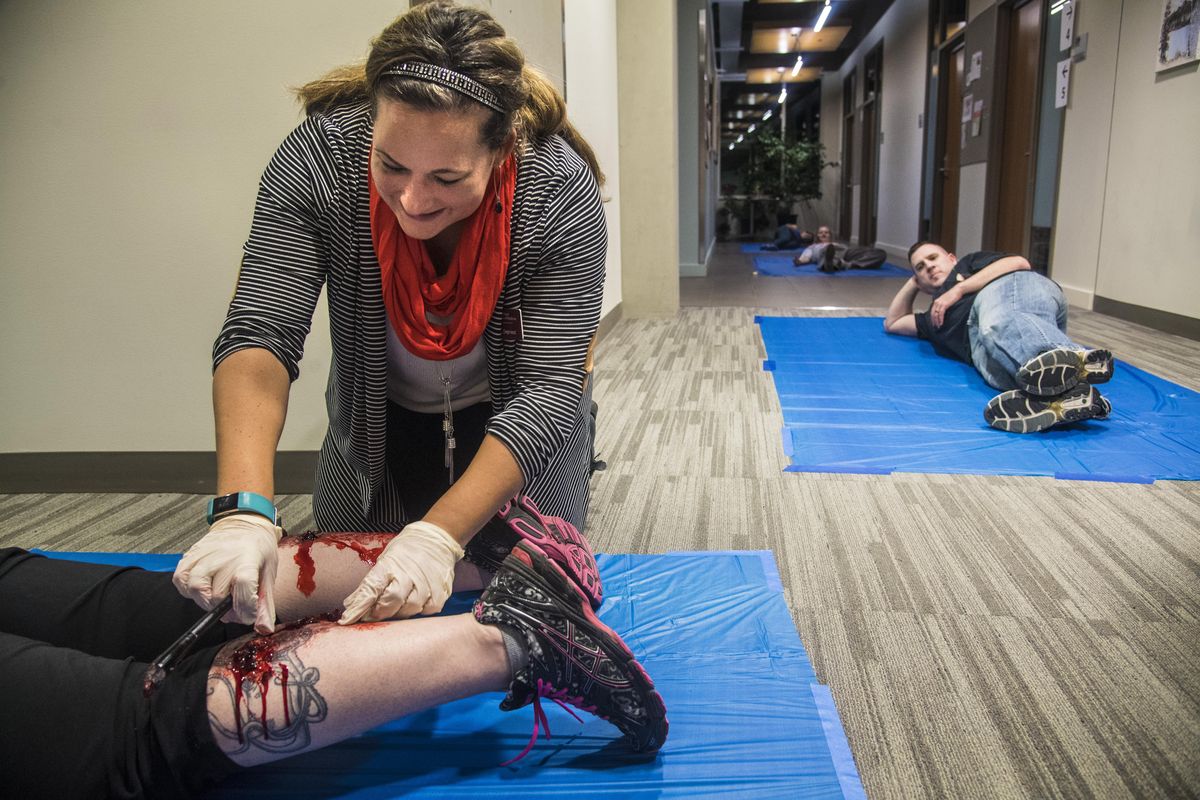WSU nursing school preps students for mass shooting scenarios

When a young woman ran down the hallway, screaming for help, 40 of her peers jumped into action.
“Please, help my friend!” she wailed. “Oh my god. He’s dying!”
In the aftermath of a simulated mass shooting Monday evening at Washington State University’s College of Nursing in Spokane, bodies lay crumpled on the floor, riddled with gunshot wounds. The woman sobbed, shouted and begged the others to revive her friend, who had taken a bullet to the chest.
She was acting – playing the part of a “distractor” to put her fellow students out of their element. They had just spent about an hour in a classroom, learning how to make tourniquets out of T-shirts and how to dress puncture wounds with candy wrappers. Now they were putting those skills to the test, trying to calmly assess the situation while victims and survivors panicked, covered in fake blood and grisly fake wounds.
“You put as much realism in there as you can,” said Kevin Stevens, the nursing college’s director of clinical performance and simulation.
Stevens, a former commander of the nursing squadron at Fairchild Air Force Base, said mass-casualty simulations are a unique way to bring together students from the various health sciences fields taught at WSU Spokane. While students may know how to treat the same injuries in a clinical setting, it requires a different set of skills to save lives in the field, she said.
Barbara Richardson, the director of interprofessional education and research at the Spokane campus, said WSU began offering the simulations after the 2015 shooting at Umpqua Community College near Roseburg, Oregon. A student-veteran at WSU got an alert about that shooting on his phone, looked around the classroom and wondered if any of his peers would be able save each other if something similar were to happen, Richardson said.
“Regretfully, I think we do need to offer these opportunities,” she said.
Monday’s simulation involved students from WSU’s medical, nursing and pharmacy schools, as well as the University of Washington’s physician assistant program. To stop the bleeding around a realistic tibia fracture, one student wrapped a piece of fabric around the victim’s leg, then cinched it tight by twisting a Crayola marker.
“They’re learning what they can grab on the fly to save their classmate’s life,” Stevens said.
The students also learned pain management techniques for mass-casualty scenarios when drugs aren’t immediately available, such as communicating with and distracting the victims, and making sure their wounds are protected.
“In active shooters, it’s the simple things that keep people alive,” said Steve James, a research professor and veteran of the British Army.
Stevens said she hopes to one day open mass-casualty training simulations to the public.
“It’s so relevant nowadays,” said Nelly Shcherbina, a first-year nursing student who played the part of a shooting victim Monday evening. “You could run into a situation like this anywhere.”